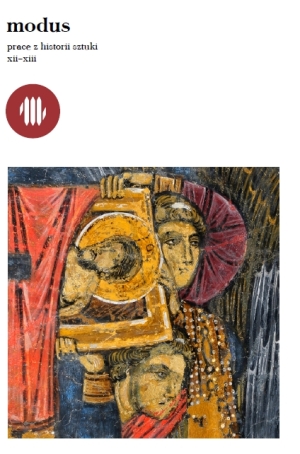Śmierć i dziewczyna i żona Putyfara. Ryciny Hansa Sebalda Behama
Death and a Girl and Potiphars Wife. Prints by Hans Sebald Beham
Author(s): Wojciech SzymańskiSubject(s): Fine Arts / Performing Arts, Photography, Visual Arts, Sociology of Art
Published by: Instytut Historii Sztuki Uniwersytetu Jagiellońskiego
Keywords: Hans Sebald Beham;prints;
Summary/Abstract: The article discusses and contrasts two censuring and at the same time tri Daniloff misogynistic images related to disease and venereology. The first of them is a shcteenthcentury print by Hans Sebald Beham entitled Death and the Sleeping Woman; the second one, dating from the beginning of the twenty-first century, is a representation from a French social campaign in the form of outdoor advertisement on billboards. The contemporary depiction of a disease, AIDS, has been interpreted here as, first of all, an image that in no way makes one aware of the risks related to the disease but only censures the so called ‘risky behaviour’. Second, it has been construed as deyised on the basis of a motif of legs spread indecently wide open, borrowed from Aby Warburgs Nachleben (life after life) iconographic lexicon. The motif, appearing in other earlier images (e.g. by Paul Avril and Caravaggio) has been interpreted as an element suggesting non-normative sexuality. The same topie has been identified in a print by Beham which has been interpreted here not only, as is traditionally understood, as a death and a girl’ theme, but also as an allusion to at least two other iconographic motifs, i.e. the drunkenness of Noe and‘satyr and nymph’ (because of the prints horizontal composition, the motif of legs spread wide open and a prop in the form of a winę tumbler associated with the girls sleep). Such an approach has allowed to interpreted Behams print as a composition in which syphilitic fear is combined with a misogynistic depiction of a sleeping, drunken and sexually active woman as potentially dangerous, which makes the print an example of a peculiar social campaign’ of the early modern period. The archetypu! literary image that is associated both with non-normative sexuality and femininity as well as with drunkenness understood as potentially dangerous manners for the social order, is the sexual nightly drunken orgy featuring Annia Paculla as its main character, described by Livy in his History, which can be linked with the discussed images through the examples of Bacchic scenes by Andrea Mantegna. Viewed from this perspective, both the shcteenth-century print and the French billboards are the images of Annia Pacullas legs spread wide open.
Journal: Modus. Prace z historii sztuki
- Issue Year: 2013
- Issue No: 12-13
- Page Range: 135-146
- Page Count: 12
- Language: Polish

